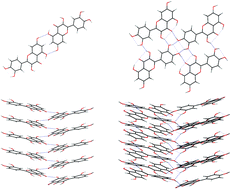NMRcrystallography methods to probe complex hydrogen bonding networks: application to structure elucidation of anhydrous quercetin†
Abstract
Despite the simple molecular structure of

* Corresponding authors
a
National Institute for Research and Development of Isotopic and Molecular Technologies, 400293 Cluj, Romania
E-mail:
cfilip@itim-cj.ro
Fax: +40 264 420042
b Babes-Bolyai University, Cluj, Romania
Despite the simple molecular structure of

 Please wait while we load your content...
Something went wrong. Try again?
Please wait while we load your content...
Something went wrong. Try again?
X. Filip, I. Grosu, M. Miclăuş and C. Filip, CrystEngComm, 2013, 15, 4131 DOI: 10.1039/C3CE40299A
To request permission to reproduce material from this article, please go to the Copyright Clearance Center request page.
If you are an author contributing to an RSC publication, you do not need to request permission provided correct acknowledgement is given.
If you are the author of this article, you do not need to request permission to reproduce figures and diagrams provided correct acknowledgement is given. If you want to reproduce the whole article in a third-party publication (excluding your thesis/dissertation for which permission is not required) please go to the Copyright Clearance Center request page.
Read more about how to correctly acknowledge RSC content.
 Fetching data from CrossRef.
Fetching data from CrossRef.
This may take some time to load.
Loading related content
